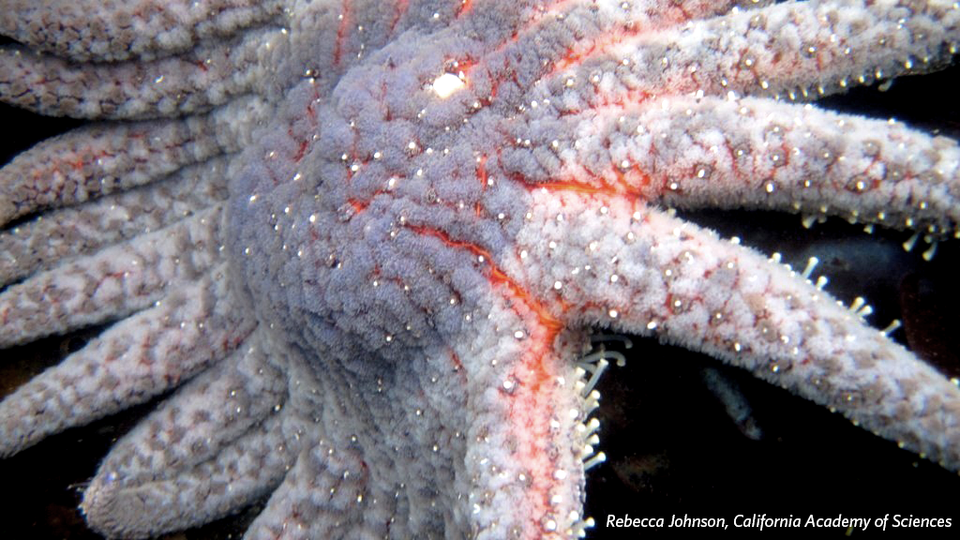
Giant pink sea star (Pisaster brevispinus), Half Moon Bay, CA
Help us find and document sea stars along the California coast for both summer and winter solstice
Every solstice we're looking for sea stars living along the California coast. In 2024, the search is on during both the summer solstice (June 20) and winter solstice (December 21).
We’re especially keeping an eye out for sunflower stars and giant pink sea stars, but we want to document as many star species as possible.
Sunflower stars are incredibly important keystone predators in our kelp forests and were especially hard-hit by sea star wasting syndrome. While we know there are some sunflower star populations still out there, they’re pretty hard to find. Someone observed a sunflower star sea on April 12, 2024, in Mendocino — let's see if we can find more!
More people searching for sea stars means more chances of finding and documenting them — we’re hopeful that by coming together to search for these keystone species, we can better understand and restore sea star populations in the long run. (Psst, a fun bonus: solstice low tides are pretty phenomenal for exploring.)
Keep reading for how to join the Solstice Sea Star Search!

Purple sunflower star (Pycnopodia helianthoides)
You don't have to know anything about sea stars to participate!
Participating in the Solstice Sea Star Search is both easy and fun — here's how to get started:
- Download the iNaturalist app for iOS or Android.
- Create an account to start making observations.
- Join the Solstice Sea Star Search iNaturalist project
- Head to the coast on your own time or during a bioblitz to make and share observations of plants and animals you see, especially species on our "most wanted" list (see below).
- Observe during low tide. See NOAA's tide table to find exact times for low tides near you.
- Spread the word with hashtag #SolsticeSeaStarSearch!
A few quick tidepooling tips
- Observe things where you find them! Never remove animals, rocks, shells, seaweeds, or plants from the tidepools.
- Walk gently, taking care to avoid stepping on animals or seaweeds (especially the shiny ones, because those are the most slippery).
- Don't “roll” rocks — animals living on the underside of rocks can only survive there.
- Be aware of the wildlife around you and try to minimize disturbances.
- Be careful! Tidepools and rocky shorelines are slippery, and tides and waves can catch you off guard. Never turn your back on the ocean.
Join an upcoming bioblitz!
Don't feel like tidepooling alone? Check out an event near you, hosted by our partners along the coast.
- Saturday, June 22 at 7 am Solstice Sea Star Search Tidepool Bioblitz at Shell Beach | Hosted by Sonoma State Park
- Saturday, June 22 at 4 pm Pacific Grove Museum Tidepooling BioBlitz | Hosted by Pacific Grove Museum of Natural History
- Sunday, June 23 at 6 am MacKerricher State Park Bioblitz @ Laguna Point | Hosted by California Academy of Sciences
- Monday, June 24 at 7 am Davenport Bioblitz | Hosted by Monterey Bay National Marine Sanctuary Exploration Center
- See even more events here